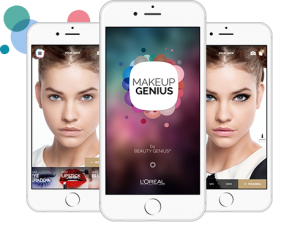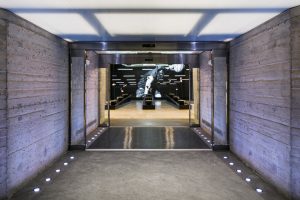During « Les trente glorieuses », a period when the world’s most developed countries experienced a tremendous economic growth and life conditions improvement, consumers witnessed an increase in products innovation and the development of new technologies. Consumers would be offered numerous products, each one more original than the other, and supported by ubiquitous ad campaigns. Brands engaged in a never-ending fight to win over their competitors’ customers. But over the last decade, the technologies developed require years of research and prototyping. This innovation competition increasing, many brands decided to refine their marketing strategy to give the user experience another dimension.
User experience is based on the prospect’s feeling, on its interactions with the company or brand, including all the platforms where they could possibly get in touch with each other: social networks, website, application, emails, texts, points of sale and even after sales service. As many canals to care of if brands want their UX strategy to be efficient.
More than the marketing aspect, UX is also about other aspects such as process, customer relationship, management, organization, company culture and values. Nowadays, quality, a good company image, or associated benefits are not enough to fully satisfy customers. By always spoiling clients with special offers, free delivery and other benefits, brands made them even more demanding, resulting in the major part only purchasing when they get offers. Clients are now looking for a more emotional and sensorial experience.
You probably got that, by now, brands biggest challenge is to create an emotion, placing it at the heart of the UX process, whether it be e-commerce or brick and mortar.
An online experience
A successful user experience starts with an easy, fine and smooth platform. It is important to acknowledge that, the more the client will be subjected to obstacles, the more likely it is to lose its interest for the brand. Even though lean methods, with UX Design being part of them, advise to found a strategy on the consumer behavior analysis. Indeed, some facts have been confirmed on several websites on really different panels. For example, users don’t like clicking, it is therefore necessary to reduce this kind of interactions by diminishing the website size.
It is also preferable to create a platform with a relatively low loading time, to avoid users leaving the website before it is fully charged.
Year 2017 has marked a great change in internet usage, since connections through mobile devices outnumbered those from computers (Cf Digital in 2017, Global Overview – a research from Wearesocial & Hootsuite). It is now indispensable for a website to adapt to any kind of usage. The aim is to make it adaptive, meaning that the size adapts to the window, but also responsive, so that it adapts to mobile as well as tablets.
However, a website cannot only provide a smooth navigation, but should also attract the prospect. By arousing user’s emotion, several e-commerce succeeded in increasing their usual clients’ average basket, together with the conversion rate. If a user is not entirely convinced by an item, he may become thanks to a corner dedicated to other buyers’ opinion on that particular product, or also if they are able to zoom in and get better details.
When internet inspires retail, and vice versa
Consumers’ exigence, whether online or offline, forced companies to create a synergy between both to create an omni channel strategy. Clients want to be acknowledge as unique users. In order to create such an experience, UX designers have to observe their consumer behavior, to build a smooth and easy path that still responds to their specific needs.
The datas collected all along the user navigation on the brand’s different channels, help put it at the heart of the process. In other words, the client purchasing a product in store will get recommendation for similar or complementary products once visiting the website. More than providing a 360° experience, omni channel strategies help get a better understanding of the consumer conversion process.
But omni channel strategy alone is not enough, consumers also want to have a synergy between all channels, in order to be able to use them simultaneously, on different devices, and still be recognized for who they are : they want online features AND brick-and-mortar advantages. An attractive concept called “Phygital”.
This phenomenon allowed brands to reinvent by proposing exclusive services. From welcoming in store to the purchase, and the try on in fitting rooms, phygital innovations can intervene in every steps of the purchase experience. As we announced it on a previous article, GEMO is one of the French companies that understood the importance of phygital by integrating different innovative services such as e-reservation, allowing to put aside an article to try on later, or AskAnna, an app enabling customers to get advice on their outfit in fitting rooms. At the same time, e-commerce take their inspiration from brick and mortar by adding chatbots to their online store, such as The Chatbot Factory, providing advice on what is the best present for Mother’s Day for example, or by adding a VR technology to test products without having to move in store, as L’Oréal did with the app Makeup Genius. Adding such technologies help overcoming the lack of entertainment that a traditional online experience involves.

E-commerce VS Brick and mortar
E-commerce gains ground, and has registered double-digit annual growth for the last decade, whereas physical retail tends to stagnate. However, e-commerce turnover is still falling far behind the brick and mortar one. To give an example, in 2014, in the United States, e-commerce generated $304bn, which only represents 6.4% of retail turnover (both online and offline). The 93.6% left result from in store sales, and account for $4.4tn (Source : eMarketer).
But how do you catch consumer’s attention when they pass by stores, eyes stuck on their phones?
Physical retailers have to double efforts to maintain a certain appeal. The digital revolution forced them to renew their strategy with innovative concepts in order to create bridges between physical and digital retail, and there came the phygital. The objective of phygital retailers is to add value by creating a real emotion, a feature that e-commerce terribly lacks.
5th Avenue : a customer experience reference

To understand the importance of customer experience, you just need to get to Manhattan, especially around the 5th avenue, where all major brands have their flagship store : the biggest, the main one, the most beautiful one, the store that represents the brand in its core values. For this flagship, brands don’t fear going extra, and 5th Ave. almost feels like the “customer experience entertainment park”. And when your competitors are next door, you got to be somewhat creative to win over their competitors’ customers, and therefore increase their conversion rate.
Nike and Adidas, which offer customers to test their products on a basketball court, a football pitch, or even treadmills. In stores of these two brands, they can customize their sneakers via terminals. Great classic customer experience, the ultra customization has proven itself. Nike integrates a digital perspective by the creation of terrains surrounded by giant screens in order to make the experience as realistic and unique as possible. It is possible to test running shoes on a treadmill in front of giant screens that will give you the sensation to run in the middle of Central Park. As for Adidas, the entrance of their Megastore on the 5th avenue is designed like the corridor of an American stadium, the ground look like a sports hall, the benches to those of cloakrooms, and finally you will found the famous water fountains, in all American colleges and stadiums. A cultural dimension which is important because it has a strong influence on the brand’s clientele. And if the sportsman who sleeps in you is tired of having traveled the 10.000m2 of the megastore, you could sit in the bleachers of the store and watch a game on screen.

Less glitzy, Ralph Lauren, in collaboration with the start-up Oaks Labs, has installed connected mirrors in fitting rooms. According to a study conducted by the web site Alerttech, a shopper who use fitting rooms are almost 7 times more likely to buy products. So, Ralph Lauren equipped its own dressing rooms with a system of RFID sensors to recognize, through labels, the products that a customer are brought in. The mirror works like a tablet and allows customers to choose a mood, a kind of light, but also to request a new size or color, and in the language of their choice. It also offers recommendations, such as a belt if the customer tries pants, or shoes if one of the items is a dress. Each request is sent to the staff’s tablets and the customer can choose to receive his basket by SMS in order to finish its purchase later. More than a way to attract customers, these innovations are a mine of information for the brand which can use the data collected to drive its strategy.
Look Forward Perspectives
The question is: what the aim of the UX overbid? Is it a way to generate traffic or to communicate? When some innovations can be seen as gadgets, some others have a real impact on companies’ revenues.
